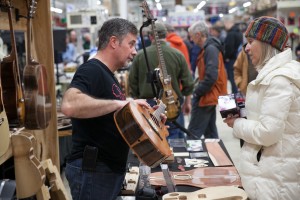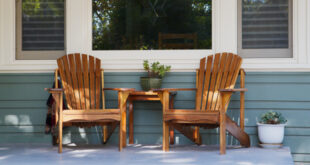Hardware Retailing editors spoke with high-performing hand and power tool retailers in its November issue. The story highlighted four different hand and power tool best practices for strengthening customer relationships and below we have provided two additional best practices. We have also created a training tool that you can share with your hand and power tool sales team.
Strategic Merchandising
While many categories are organized by product type, such as placing all potting soil together and all planters together, most retailers organize their hand and power tool department differently.
“We have two main aisles that are dedicated to hand tools, power tools and the accessories that go with them,” says Joel Hoover, store manager at Mountain View Farm & Garden in Chambersburg, Pennsylvania. “Our power tools are grouped by brand, so Milwaukee is the first on the wall and it’s organized by battery tools, 18V, 12V and then corded.”
 For hand tools, such as hammers and levels, Mountain View Farm & Garden groups by product (type) instead of brand. Hoover says that 60-70 percent of his hand and power tool customers are pros and the store carries 51 different brands of tools, 13 in power tools and 38 in hand tools.
For hand tools, such as hammers and levels, Mountain View Farm & Garden groups by product (type) instead of brand. Hoover says that 60-70 percent of his hand and power tool customers are pros and the store carries 51 different brands of tools, 13 in power tools and 38 in hand tools.
Hoover says they organize the department this way because customers, specifically pros, are very loyal to different brands of power tools, but with hand tools, they just want the specific product and are not as loyal to a brand.
Mountain View Farm & Garden also uses sliders, so the main tools are hung on wall racking with complimentary accessories hung on sliders in front. Hoover says the sliders have worked very well and customers have made comments on the easy-to-understand organization.
Prescott True Value Hardware in Prescott, Arizona, has a bigger DIY-client base, with 70 percent DIY and 30 percent pro. Tom Toth, co-owner of the store, says it’s very important that his customers can touch and feel the products.
Therefore, all power tools are on display and not chained.
“We keep most of the tools functional so if people want to test them they can,” Toth says. “A lot of our customers have never used an impact driver, so it is very important that they can interact with the tool before they purchase it.”
Toth mentioned that having the products on display is something that differentiates Prescott True Value Hardware from the big-box stores.
“Customers don’t want to stand in line and wait for an associate to open display cages, like at the big boxes,” Toth says. “At our store, they can immediately get the product without having an associate unlock the cage.”
Creating Educational Events
To focus more on the DIY crowd, consider hosting educational events around hand and power tools.
Each November, Prescott True Value Hardware hosts a ladies’ night, usually incorporating a power tool demonstration. Women really enjoying seeing the demo and getting hands-on experience with the tools. Some men attend these events as well.
Hosting a ladies’ night with a tool vendor will help the everyday DIYer become more comfortable with hand and power tools and more educated on the different projects they can complete.
Neu’s Building Center, in Menomonee Falls, Wisconsin, for example, offers educational events specifically focused on woodworking. Starting in the fall and running through February, it hosts a woodworking techniques class.
 “We have local woodcrafters come in to operate the tools and show people the best ways to use the tools for their projects,” says Mike Karch, vice president and general manager of Neu’s Building Centre .
“We have local woodcrafters come in to operate the tools and show people the best ways to use the tools for their projects,” says Mike Karch, vice president and general manager of Neu’s Building Centre .
To accompany this woodworking techniques class, Neu’s hosts a woodworking show and sale, where vendors and craftsmen exhibit different craft projects people can complete at home.
“We have chainsaw carvers out front along with other vendors who produce wood toys, clocks and other products,” Karch says.
Hosting these unique, niche events allow DIY shoppers to learn about certain tools or projects, improving their hand and power tool skill set.
 Hardware Retailing The Industry's Source for Insights and Information
Hardware Retailing The Industry's Source for Insights and Information








